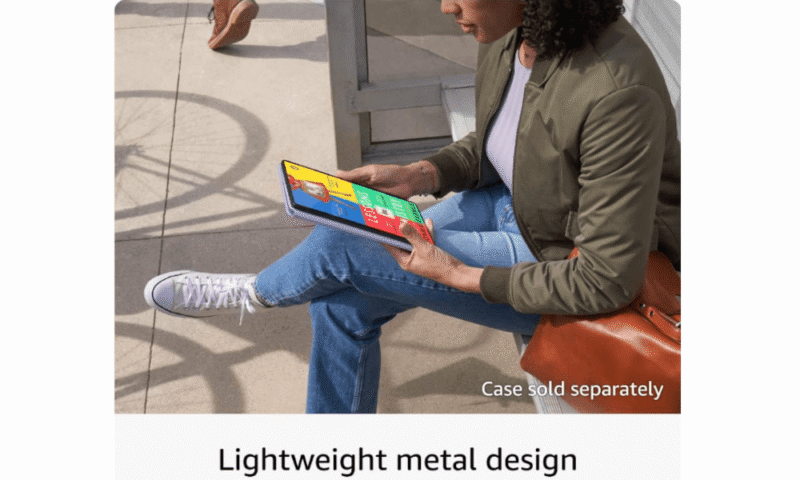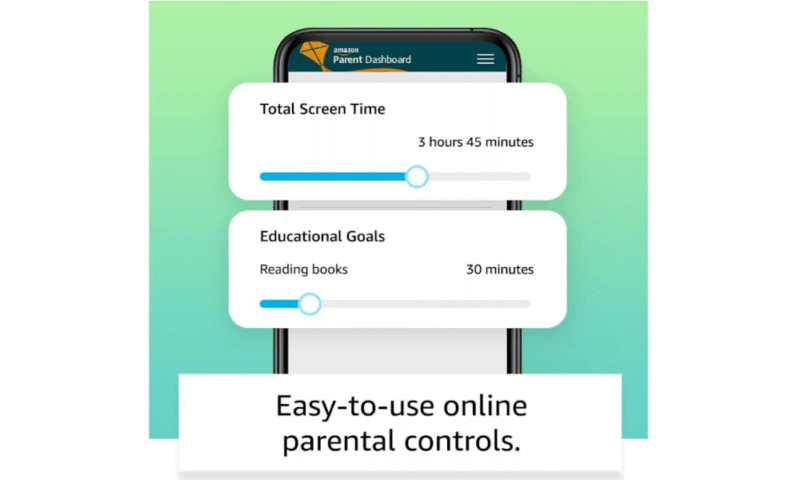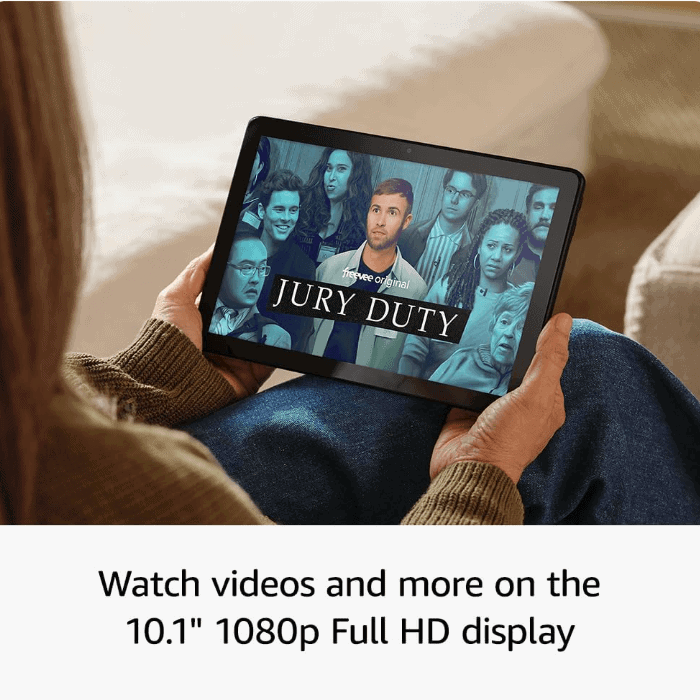Amazon Kindle vs Fire Tablet
Amazon offers both e-readers and tablets, but they serve very different purposes. This Kindle vs Fire Tablet guide explores how each device works, what they’re best for, and why the right device for you depends on how you plan to use it.
A Kindle vs Fire Tablet comparison isn’t as straightforward as you might think — and it’s not just about choosing the cheaper device. Each one serves a purpose. The best Kindles are for reading, while the best Fire Tablets are for more general use. Both are part of the Amazon ecosystem, which is ideal if you already have an Amazon account, Amazon Prime Video or Alexa set up.
In this guide, we’ll break down every major difference between the two devices and compare their similarities. We look at features like screen quality, ease of use and overall performance so you can decide which one meets your day-to-day needs.
-
11/29/2022 Facts checked
Added information about the Kindle Scribe and updated Basic Kindle 11th Generation.
-
07/23/2023 Facts checked
Added information about the Amazon Fire Max 11 and fixed Amazon links.
-
08/31/2025 Facts checked
We’ve rewritten our article to dig deeper into the similarities and differences between Kindles and Fire Tablets.
Cloudwards’ Choice: e-Reader or Tablet?
What Is the Main Difference Between Kindle and Fire Tablet?
The main difference between Kindles and Fire Tablets is that Kindle devices focus on books and audiobooks, while Fire Tablets function more like a traditional tablet. The Kindle is built for immersive, distraction-free reading, while the Fire Tablet is a multipurpose device designed for using apps, watching videos and browsing the web. Both connect to Amazon’s ecosystem.
You can read more Cloudwards Kindle guides, including the Kindle user guide and how to set up Kindle devices.
What Is a Fire Tablet?
Fire Tablets are Amazon’s line of budget-friendly tablets built for entertainment, browsing and everyday use. They run on Fire OS, a custom version of Android that lets you stream videos, browse the web, play games, read e-books and use apps from the Amazon app store. They’re designed to be an affordable alternative to iPads or Android tablets.
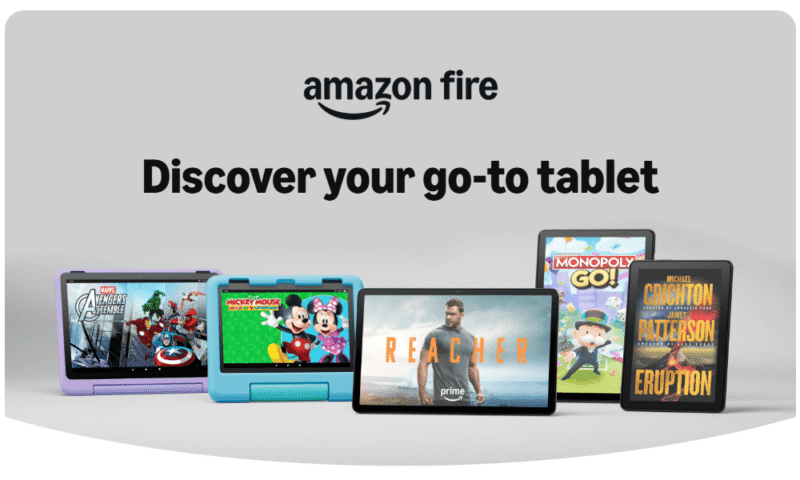
What Is the Amazon Kindle e-Reader?
The Amazon Kindle is a dedicated e-reader specifically for reading digital books and documents and listening to audiobooks. It uses a glare-free e-ink display that mimics the look of paper to help you avoid eye strain during long reading sessions. Kindles typically don’t support apps or video playback — the software is streamlined for readers.
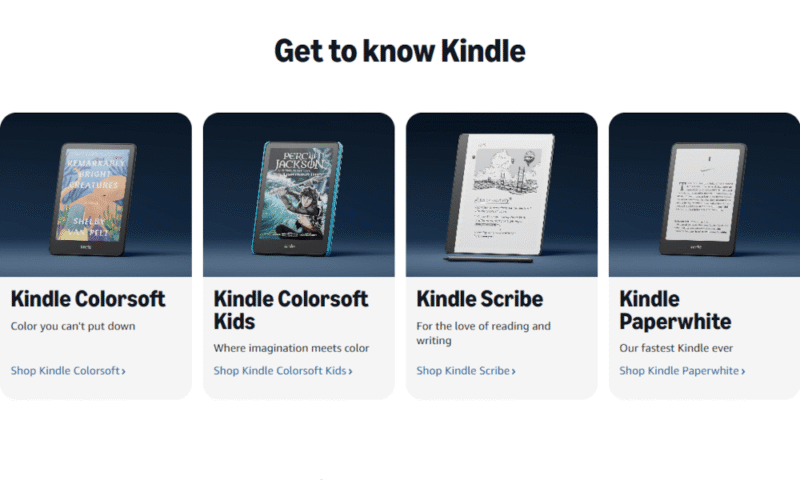
Which Is Better: Amazon Kindle vs Fire Tablet?
Whether the Kindle or the Fire Tablet is better depends entirely on how you want to use your device. The Kindle is unmatched for dedicated reading — it’s lightweight, easy on the eyes and free from the distractions of apps and notifications.
That said, a Fire Tablet offers far more flexibility for a similar price. It’s better suited if you want to stream shows, search the internet or use apps in addition to reading occasionally. It may provide better overall value if you want a budget-friendly, all-purpose device.
Who Is Amazon Kindle For?
- Avid readers: E-ink screens reduce eye strain, and long battery life supports uninterrupted reading stints for readers of fiction, nonfiction and everything in between.
- Travelers and commuters: The lightweight build, weeks-long battery life and ability to store thousands of books make the Kindle ideal for readers on the move.
- Students and researchers: PDF support, dictionary integration and tools for highlighting and exporting make the Kindle useful for annotating and referencing texts.
Who Is Amazon Fire Tablet For?
- Budget-conscious users: Fire Tablets offer great value for users who want a capable device for streaming, browsing and gaming without a premium price tag
- Families: Kid-friendly models with strong parental controls and access to Amazon Kids+ make Fire Tablets ideal for households with young users.
- People who stream, browse and scroll: You can watch Netflix, surf the internet, read graphic novels in color or use social media apps on a Fire Tablet.
Our Detailed Comparison Methodology
To compare the Kindle and Fire Tablet, we evaluated each device based on its core features, performance, display quality, software and value for money. We focused on how each device serves its intended purpose — distraction-free reading or multipurpose use.
We also looked at technical specifications, battery life, pricing tiers and ease of use across both devices. By identifying what these devices have in common and where they differ, we’ve created a side-by-side breakdown to help you decide which one best fits your needs.
Amazon Fire Tablet vs Kindle: Comparison at a Glance
| Feature | Amazon Kindle | Amazon Fire Tablet |
|---|---|---|
| Screen type | Monochrome e-ink (glare-free) | Full-color LCD (glossy, backlit) |
| Battery life | Up to 12 weeks | 10-14 hours |
| App support | (via Amazon app store) | |
| Alexa integration | (to read books aloud) | (hands-free/tap to activate) |
| Kid-friendly version | ||
| Waterproof models | ||
| Audio support | ||
| Storage options | 8GB-64GB | 16GB-128GB (expandable via microSD) |
| Portability | Lightweight, compact | Compact, slightly heavier |
| Price range | ~$100-$400 | ~$100-$200 |
| Primary use case | Reading only | Reading, streaming, browsing |
Amazon Kindle Key Features:
- E-ink display technology: Kindles use glare-free screens that mimic real paper, which is ideal for long reading sessions and outdoor use.
- Weeks-long battery life: A single charge can last up to 12 weeks, depending on the usage and model.
- Distraction-free reading: The lack of access to third-party apps and games provides a focused environment for reading books, PDFs or personal documents.
- Audible support: Kindle devices can stream audiobooks via Audible, letting you seamlessly switch between reading and listening.
- Waterproof design: Some models, like the Kindle Paperwhite, are IPX8-rated — meaning they can withstand brief submersion in water.
Amazon Fire Tablet Key Features:
- Full-color LCD display: Fire Tablets use LCD screens suitable for browsing, streaming and light gaming in full color.
- Amazon app store access: Unlike Kindles, Fire Tablets support apps like Netflix, Spotify and Zoom, which are available from Amazon’s app marketplace.
- Alexa integration: Built-in Alexa functionality allows for hands-free control of smart home devices, content playback and information searches.
- Expandable storage: Many Fire models include microSD card slots so you can expand storage for apps, personal media and offline content.
- Multiple profiles and kids mode: You can set up multiple profiles, including options with parental controls and Amazon Kids+ content, making it suitable for families.
Amazon Kindle vs Fire Tablet: Similarities
While the Amazon Fire Tablet and the Kindle are designed for different tasks, they share some similar traits — especially since they’re both part of Amazon’s ecosystem. These common traits revolve around their integration with Amazon services, family-friendly features and compact, portable design.
Fire Tablet vs Amazon Kindle: Differences
While the Kindle and the Fire Tablet both come from Amazon, the differences between them are more significant than the similarities. They show up in everything from screen technology and software to battery life, performance and pricing.
Amazon Kindle Pricing
Kindles have affordable entry-point pricing for dedicated readers, but price differences climb steeply when choosing premium models. Kids editions are priced similarly to standard Kindles but include added extras like a case and a Kids+ subscription.
| Model | With Ads | Without Ads |
|---|---|---|
| Kindle (6”, 16GB) | $109.99 | $129.99 |
| Kindle Paperwhite (7”, 16GB) | $159.99 | $179.99 |
| Kindle Colorsoft (7” color e-ink, 16GB) | $219.99 | |
| Kindle Colorsoft Signature Edition (7”, 32GB) | $279.99 | |
| Kindle Scribe (10.2”, 16GB stylus) | $399.99 | |
| Kindle Kids (6”, 16GB) | $129.99 | |
| Kindle Paperwhite Kids (7”, 16GB) | $179.99 | |
| Kindle Colorsoft Kids (7”, 16GB) | $269.99 |
Amazon Fire Tablet Pricing
Fire Tablets are more versatile and include slightly more affordable models than the Kindle. Ad-supported, basic tablets are cheaper, while higher-end models like the Fire Max 11 are designed for more demanding use. All Kids models come ad-free and include protective accessories like a case. Although these are more expensive, they’re family-friendly.
| Model | With Ads | Without Ads |
|---|---|---|
| Fire HD 8 (8”, 32GB) | $119.99 | $134.99 |
| Fire HD 10 (10.1”, 32GB) | $69.99 | $84.99 |
| Fire Max 11 (11”, 64GB) | $139.99 | $154.99 |
| Fire 7 Kids (7”, 16GB) | $54.99 | |
| Fire 8 Kids (8”, 32GB) | $74.99 | |
| Fire 10 Kids (10.1”, 32GB) | $104.99 |
The Verdict: Kindle or Fire Tablet?
If your main goal is reading, the Kindle is a better choice. It’s purpose-built for e-books and audiobooks, with a distraction-free interface and a weeks-long battery that’s ideal for reading marathons.
That said, the Amazon Fire Tablet is a better option if you want a versatile, budget-friendly tablet for entertainment and productivity. It’s hard to beat the value it offers, especially with features like app support, video playback and Alexa integration.
Whichever option you choose, Amazon offers a 30-day return policy, so you can try out your chosen device risk-free.
FAQ: The Best Amazon Tablet
No, you can’t play games on Kindle e-readers. Kindles are designed for reading and do not support apps, let you watch videos or play games.
No, the Kindle Paperwhite is an e-reader, while the Fire is a full-featured tablet. The Paperwhite uses an e-ink screen designed for reading and has weeks of battery life. Fire Tablets have color LCD displays and support apps, similar to an Android tablet.
Yes, Fire Tablets are compatible with the Kindle app. You can read e-books, access your Kindle library and listen to audiobooks using Audible despite the Fire Tablet not being a dedicated e-reader.







